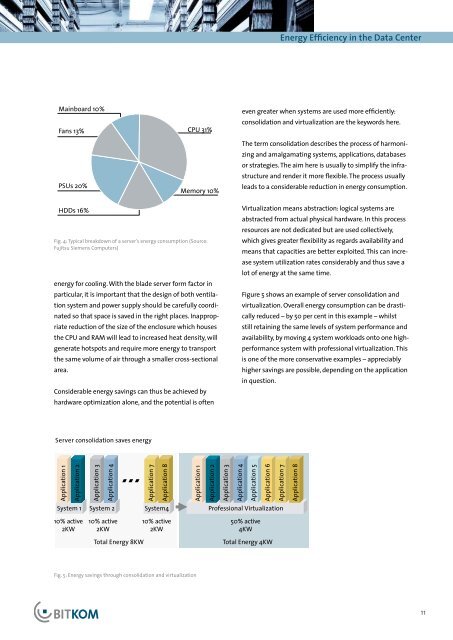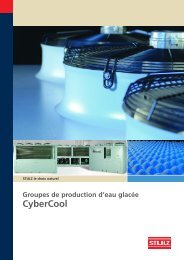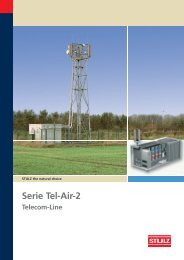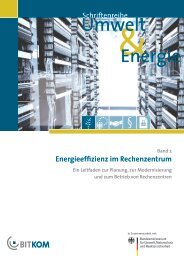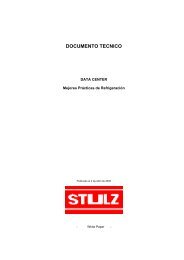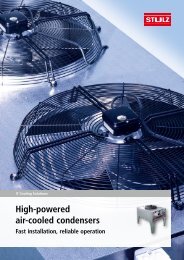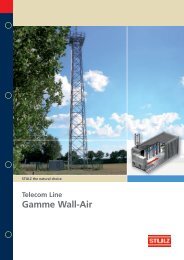Climate protection needs energy efficient data centers - Stulz GmbH
Climate protection needs energy efficient data centers - Stulz GmbH
Climate protection needs energy efficient data centers - Stulz GmbH
Create successful ePaper yourself
Turn your PDF publications into a flip-book with our unique Google optimized e-Paper software.
Energy Efficiency in the Data CenterMainboard 10%Fans 13%PSUs 20%CPU 31%Memory 10%even greater when systems are used more <strong>efficient</strong>ly:consolidation and virtualization are the keywords here.The term consolidation describes the process of harmonizingand amalgamating systems, applications, <strong>data</strong>basesor strategies. The aim here is usually to simplify the infrastructureand render it more flexible. The process usuallyleads to a considerable reduction in <strong>energy</strong> consumption.HDDs 16%Fig. 4: Typical breakdown of a server’s <strong>energy</strong> consumption (Source:Fujitsu Siemens Computers)<strong>energy</strong> for cooling. With the blade server form factor inparticular, it is important that the design of both ventilationsystem and power supply should be carefully coordinatedso that space is saved in the right places. Inappropriatereduction of the size of the enclosure which housesthe CPU and RAM will lead to increased heat density, willgenerate hotspots and require more <strong>energy</strong> to transportthe same volume of air through a smaller cross-sectionalarea.Considerable <strong>energy</strong> savings can thus be achieved byhardware optimization alone, and the potential is oftenVirtualization means abstraction: logical systems areabstracted from actual physical hardware. In this processresources are not dedicated but are used collectively,which gives greater flexibility as regards availability andmeans that capacities are better exploited. This can increasesystem utilization rates considerably and thus save alot of <strong>energy</strong> at the same time.Figure 5 shows an example of server consolidation andvirtualization. Overall <strong>energy</strong> consumption can be drasticallyreduced – by 50 per cent in this example – whilststill retaining the same levels of system performance andavailability, by moving 4 system workloads onto one highperformancesystem with professional virtualization. Thisis one of the more conservative examples – appreciablyhigher savings are possible, depending on the applicationin question.Server consolidation saves <strong>energy</strong>Application 1Application 2Application 3ApplicationAPP 44Application 7Application 8Application 1Application 2Application 3Application 4Application 5Application 6Application 7Application 8System 1System 2System4Professional Virtualization10% active2KW10% active2KW10% active2KW50% active4KWTotal Energy 8KWTotal Energy 4KWFig. 5: Energy savings through consolidation and virtualization11


